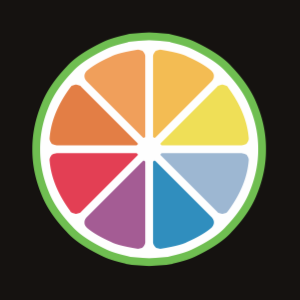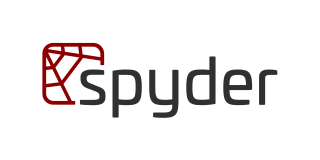
Git is a distributed version control system that tracks versions of files. It is often used to control source code by programmers collaboratively developing software.
In software development, distributed version control is a form of version control in which the complete codebase, including its full history, is mirrored on every developer's computer. Compared to centralized version control, this enables automatic management branching and merging, speeds up most operations, improves the ability to work offline, and does not rely on a single location for backups. Git, the world's most popular version control system, is a distributed version control system.
Open-source software development (OSSD) is the process by which open-source software, or similar software whose source code is publicly available, is developed by an open-source software project. These are software products available with its source code under an open-source license to study, change, and improve its design. Examples of some popular open-source software products are Mozilla Firefox, Google Chromium, Android, LibreOffice and the VLC media player.
A kernel is a component of a computer operating system. A comparison of system kernels can provide insight into the design and architectural choices made by the developers of particular operating systems.
Squashfs is a compressed read-only file system for Linux. Squashfs compresses files, inodes and directories, and supports block sizes from 4 KiB up to 1 MiB for greater compression. Several compression algorithms are supported. Squashfs is also the name of free software, licensed under the GPL, for accessing Squashfs filesystems.

The Embeddable Linux Kernel Subset (ELKS), formerly known as Linux-8086, is a Linux-like operating system kernel. It is a subset of the Linux kernel, intended for 16-bit computers with limited processor and memory resources such as machines powered by Intel 8086 and compatible microprocessors not supported by 32-bit Linux.
The Berkeley Packet Filter is a network tap and packet filter which permits computer network packets to be captured and filtered at the operating system level. It provides a raw interface to data link layers, permitting raw link-layer packets to be sent and received, and allows a userspace process to supply a filter program that specifies which packets it wants to receive. For example, a tcpdump process may want to receive only packets that initiate a TCP connection. BPF returns only packets that pass the filter that the process supplies. This avoids copying unwanted packets from the operating system kernel to the process, greatly improving performance. The filter program is in the form of instructions for a virtual machine, which are interpreted, or compiled into machine code by a just-in-time (JIT) mechanism and executed, in the kernel.

JUCE is an open-source cross-platform C++ application framework, used for the development of desktop and mobile applications. JUCE is used in particular for its GUI and plug-ins libraries. It is dual licensed under the GPLv3 and a commercial license.
Quilt is a software utility for managing a series of changes to the source code of any computer program. Such changes are often referred to as "patches" or "patch sets". Quilt can take an arbitrary number of patches as input and condense them into a single patch. In doing so, Quilt makes it easier for many programmers to test and evaluate the different changes amongst patches before they are permanently applied to the source code.
nftables is a subsystem of the Linux kernel providing filtering and classification of network packets/datagrams/frames. It has been available since Linux kernel 3.13 released on 19 January 2014.

Spyder is an open-source cross-platform integrated development environment (IDE) for scientific programming in the Python language. Spyder integrates with a number of prominent packages in the scientific Python stack, including NumPy, SciPy, Matplotlib, pandas, IPython, SymPy and Cython, as well as other open-source software. It is released under the MIT license.

Dracut is a set of tools that provide enhanced functionality for automating the Linux boot process. The tool named dracut is used to create a Linux boot image (initramfs) by copying tools and files from an installed system and combining it with the Dracut framework, which is usually found in /usr/lib/dracut/modules.d.

Zephyr is a small real-time operating system (RTOS) for connected, resource-constrained and embedded devices supporting multiple architectures and released under the Apache License 2.0. Zephyr includes a kernel, and all components and libraries, device drivers, protocol stacks, file systems, and firmware updates, needed to develop full application software.

Windows Subsystem for Linux (WSL) is a feature of Microsoft Windows that allows developers to run a Linux environment without the need for a separate virtual machine or dual booting. There are two versions of WSL: WSL 1 and WSL 2. WSL is not available to all Windows 10 users by default. It can be installed either by joining the Windows Insider program or manually via Microsoft Store or Winget.
KSMBD is an open-source in-kernel CIFS/SMB server created by Namjae Jeon for the Linux kernel. Initially the goal is to provide improved file I/O performance, but the bigger goal is to have some new features which are much easier to develop and maintain inside the kernel and expose the layers fully. Directions can be attributed to sections where Samba is moving to a few modules inside the kernel to have features like Remote direct memory access (RDMA) to work with actual performance gain.

postmarketOS is an operating system primarily for smartphones, based on the Alpine Linux distribution.

ROCm is an Advanced Micro Devices (AMD) software stack for graphics processing unit (GPU) programming. ROCm spans several domains: general-purpose computing on graphics processing units (GPGPU), high performance computing (HPC), heterogeneous computing. It offers several programming models: HIP, OpenMP, and OpenCL.
Microsoft, a technology company historically known for its opposition to the open source software paradigm, turned to embrace the approach in the 2010s. From the 1970s through 2000s under CEOs Bill Gates and Steve Ballmer, Microsoft viewed the community creation and sharing of communal code, later to be known as free and open source software, as a threat to its business, and both executives spoke negatively against it. In the 2010s, as the industry turned towards cloud, embedded, and mobile computing—technologies powered by open source advances—CEO Satya Nadella led Microsoft towards open source adoption although Microsoft's traditional Windows business continued to grow throughout this period generating revenues of 26.8 billion in the third quarter of 2018, while Microsoft's Azure cloud revenues nearly doubled.

Fyne is a free and open-source cross-platform widget toolkit for creating graphical user interfaces (GUIs) across desktop and mobile platforms. It is designed to enable developers to build applications that run on multiple desktop and mobile platforms/versions from a single code base. Fyne uses OpenGL to provide cross-platform graphics. It is inspired by the principles of Material Design to create applications that look and behave consistently across all platforms. It is licensed under the terms of the 3-clause BSD License, supporting the creation of free and proprietary applications. In December 2019 Fyne became the most popular GUI toolkit for Go, by GitHub star count and in early February 2020 it was trending as #1 project in GitHub trending ranks.









